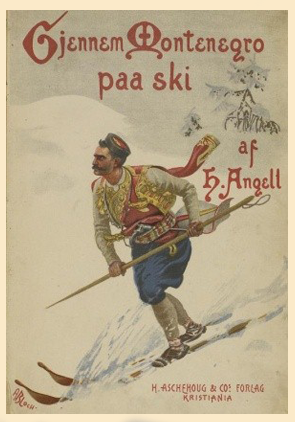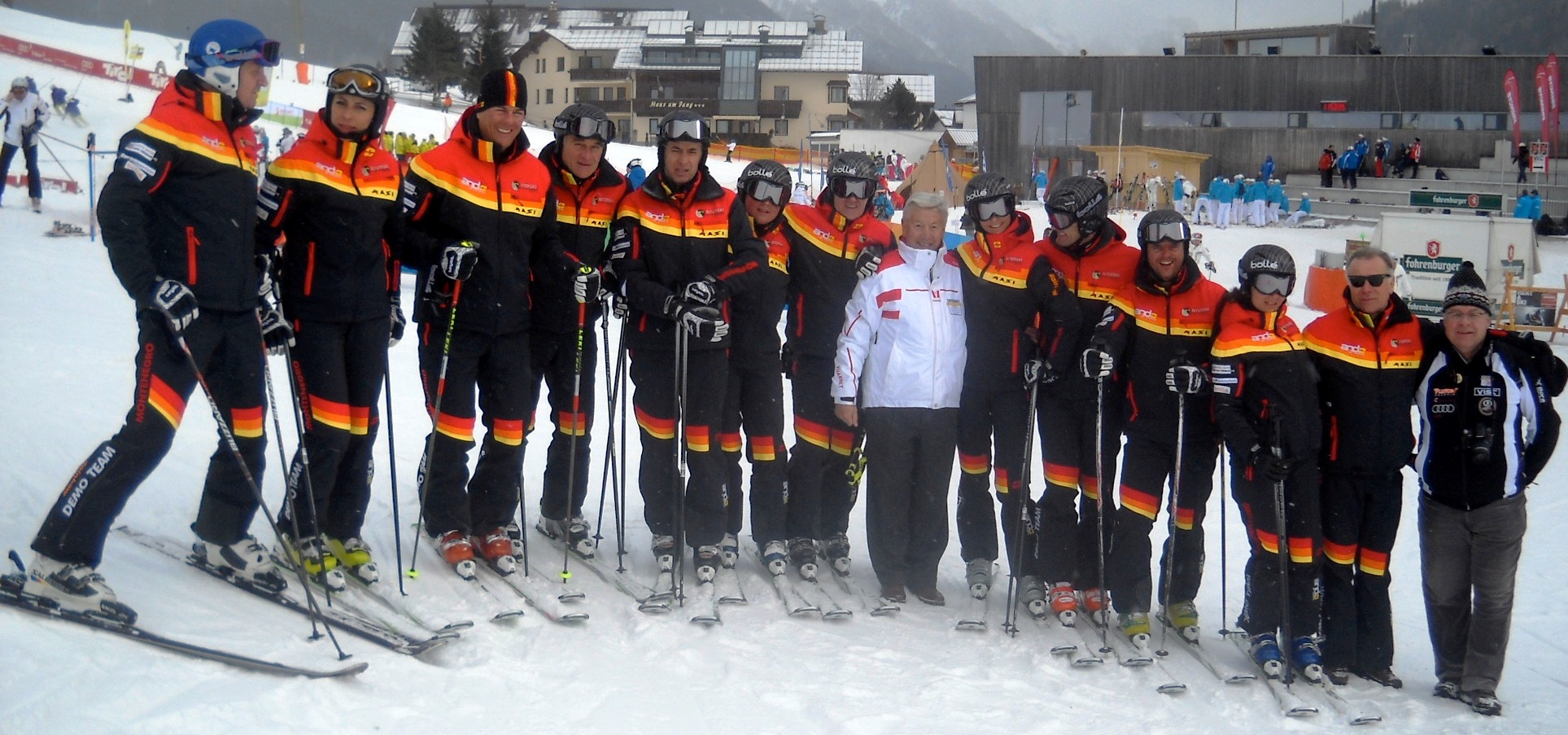Vijest
ONLINE PREDAVANJA
08.03.2021.

Online Seminar IVSS
Dear friends of Interski,
please find below an IVSS Invitation to two very interesting seminars
All the best
Peter
IVSS (International Association Snowsport at Schools and Universities) is thrilled to announce the launch of our Online Seminar Series to all interested National Ski Associations & Organizations, ski schools & ski instructors, educators, and ski enthusiasts. In our effort to combine scientific and practical knowledge to promote lifelong engagement in Snowsports at all levels and in all aspects of our organizations, we have organized a series of online seminars to virtually present highly relevant topics for educators and athletes and facilitate important discussion thereof. Each of the online seminars will be action-focused, with specialists of various organizations and countries presenting best practices in their field of studies. Participants will have the opportunity to ask questions and connect with like-minded individuals working to promote the joy of skiing. Additional information on each session can be found in the attached document. The first seminar, will be held on March 11, 2021 @5pm ECT under the leadership of Ron LeMaster, renowned instructor, coach, and ski technique expert. His presentation focuses on "Rethinking Movement Analysis – Integrating Tactics, Technique and Teaching". For registration: https://zoom.us/webinar/register/WN_Vg1QV26xS3u8h_gcccatX
The second seminar is planned for March 25, 2021 @5pm ECT and will be held by Rado Pišo, PhD, Director at the Science and Research Centre of Koper, Slovenia and Member of Executive Board of SITAS Ski Instructors and Trainer Association of Slovenia. He will speak to the "Basic Steps of Motor Learning in Alpine Skiing". For registration: https://zoom.us/webinar/register/WN_TTNyZPSqRW64p8e7HAKO0g
Registration Information:
Cost: Free
Prerequisites: None
More information: IVSS website / attached documents
We hope to see you online!
Dr. Dieter Bubeck
President IVSS
Presenter: Ron Lemaster
PSIA – AASI Professional Ski Instructor and Coach Ski Technique Expert
Type: Presentation
Title: Rethining Movement Analysis – Integrating Tactics, Technique and Teaching
Duration: 90min.
When: March 11, 5:00 p.m. CET
Registration Information:
• Cost: Free
• Registration: Click here
• Registration Deadline: Tuesday, March 9, 2021, 11:59 ECT
Description:
Analyzing skier’s body movements and how they affect that skier’s movement down the hill is an important component of coaching and instruction. This “movement analysis” is also a central element of programs for developing and certifying ski instructors. As seen by many instructors, unfortunately, movement analysis boils down to finding cause and effects relationships between body movements and ski behavior. Instructors often think of it as the starting point for analyzing a person’s skiing, and consider the results of the analysis itself as something that they can use as teaching material to help the student. The topics of body movements and ski behavior need to be considered within the broader context of how and why a skier wants to move down the hill from turn to turn, and the way we communicate with them about it.
This presentation will describe and illustrate with video examples the larger context of teaching skiing, including tactics, techniques, and teaching methods, and how movement analysis can be effectively integrated into that context.
Learning Outcome:
Participants will see “movement analysis” as not only analyzing the cause and effect relationships between movements skiers make with their bodies and the resulting behavior of their skis, but including, and most often starting with, analysis of the skiers’ intended movement down the hill and the tactics they adopt to achieve that movement. They will also understand that the instructors should use the results of movement analysis as motivation for, but not be the content of, the teaching methods they use with their students.
Learning Experiences (activities/exercises): T
here will be numerous videos, photos and other graphic images used to support the content. Practical video examples of skiers will be used for in- session analysis.
Education Criteria: How will partcipation and learning be validated for continuing education credit? How do we measure the learning?
• Relevance to current methodology and teaching/learning theory
• Linked to a particular skill set focus of the Learning Connection model
• Specific prerequisite (learning experience) relevance to current
courses/exams.
Videos/Handouts: The presentation slides will be posted for viewing following the presentation.
www.ivss.ski Allmandring 28 Stuttgart 70569, Germany president@ivss.ski
Presenter: Rado Pišo, PhD
Director at the Science and Research Centre of Koper, Slovenia Member of Executive Board of SITAS Ski Instructors and Trainer Association of Slovenia
Type: Interactive Presentation
Title: Basic Steps of Motor Learning in Alpine Skiing
Duration: 60 min
When: March 25, 2021, 5:00 p.m. CET
Registration Information:
• Cost: Free
• Prerequisites: None
• Registration: klick here
• Registration Deadline: Tuesday, March 23, 2021, 11:59 ECT
Description:
Ski instruction is a cognitive process in which the learners acquire new skills and thus enrich their motor memory while simultaneously developing the corresponding motor skills. It is a process that evolves in various stages – logically super-structured milestones on the path to skiing ability. The sequence of the acquisition of these stages has a particular importance in learning to ski independently of different ski schools approaches all around the world. Following the familiarization with the new environment, equipment and surface, the child gradually gains the feel for moving in this environment. Based on numerous experiences, this is followed by gaining the feel for changing direction (first turn) and with that a transition across the fall line. In this phase, an accentuated loading on one ski throughout the turn usually carries out this transition. In the next stage, the individuals must learn to adjust their own center of gravity. Managing the center of mass by moving to a higher or lower point, and consequently being able to unload skis at the appropriate time, is a very demanding task for a beginner. It is not until the individual has reached this level of skill that we can set our target on making a fully coordinated turn with (or without) a pole plant and on dynamic turning along wider or narrower corridors. Based on the information received from the environment, the awareness of one’s own body and previous experience, the individual creates an appropriate motor response and executes it with greater or lesser competence. In motor learning as well as in exercise, traininga or even racing, the success of this process depends on certain important spatio-temporal dimensions, which, in the course of a single motor action, occur in a specified sequence and provide the necessary precondition for a consistent and successful completion of the action (Pišot, Kipp, Supej, 2015). Five spatio-temporal dimensions; accuracy, speed, timing, rhythm and coordination (softness) of motor task completion are all the more important when performing motor tasks, the individual is constantly exposed to the loss of balance (e.g. slipping) and heavily dependent on the surface (slope of the terrain, type and temperature of snow) and the equipment (the side-cut of the skis, the quality of ski boots, the suitability of bindings etc.).
The process of teaching and learning skiing will be presented to the audience (ski instructors and other ski experts) from the learner’s point of view. They will learn about the mechanisms of the learner- centered approach to overcoming the spatio-temporal barriers in alpine skill acquisition.
Learning Outcome:
Understanding the process of teaching skiing as one that stimulates changes that occur within the learner. Coordinated skiing is the logical consequence of maximum adaptation (to the equipment, to the snow, ...), of acquiring the sense of turning (changing direction) and the sense of playing with one's center of mass (managing the center of mass). The motto is: Schools should not be adapted to teachers to teach, but to students to learn! (Briggs Mc Lean in H. Abraham, 1983)
Learning Experiences (activities/exercises):
Writing out thoughts on concepts, journaling, notetaking during the webinars. Reflection through post online seminar survey.
Education Criteria: How will partcipation and learning be validated for continuing education credit? How do we measure the learning?
• Relevance to current methodology and teaching/learning theory
• Linked to a particular skill set focus of the Learning Connection model
• Specific prerequisite (learning experience) relevance to current
courses/exams.
Videos/Handouts: Video files (up to 5) will be provided and uploaded ahead of time along with handout documents for participants.
www.ivss.ski Allmandring 28 Stuttgart 70569, Germany president@ivss.ski
Vidite sve vijesti


